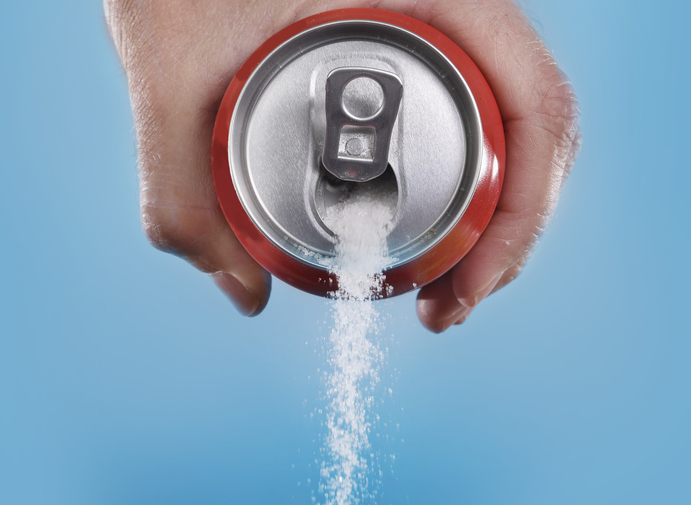
New research suggests that partial or total colectomy could put patients at a greater risk of type 2 diabetes.
Researchers used the Danish National Patient Register to identify 46,279 total colectomy, partial colectomy, and proctectomy patients. Each colectomy patient was matched with 15 non-colectomy patients (n = 694,110) who had undergone other surgeries not related to the gastrointestinal tract. Mean follow-up times were as follows: total colectomy patients, 7.1 years; right hemicolectomy patients, 5.6 years; resection of the transverse colon patients, 6.3 years; left hemicolectomy patients, 5.7 years; sigmoidectomy patients, 6.4 years; and proctectomy patients, 5.8 years.
A new study shows patients who undergo colectomy are at an increased risk of developing type 2 #diabetes. @bcmhouston's Dr. Rajesh Shah comments on the research. @medpagetoday https://t.co/nk62MFl8pr
— BCM Media Relations (@BCMHouston_News) November 5, 2018
Compared with non-colectomy patients, total colectomy patients (n = 3,793) were 1.4 times as likely to have type 2 diabetes (95% confidence interval [CI], 1.21 to 1.62; P < 0.001). Left hemicolectomy (n = 2,513) and sigmoidectomy (n = 13,927) patients had the highest hazard ratios (HRs) for type 2 diabetes: 1.41 (95% CI, 1.19 to 1.67; P < 0.001) and 1.30 (95% CI, 1.21 to 1.40; P < 0.001), respectively. Right hemicolectomy (n = 10,989) and transverse colon resection patients (n = 673) did not have a significantly increased diabetes risk (right hemicolectomy HR, 1.08 [95% CI, 0.99 to 1.19; P = 0.10]; transverse colon resection HR, 1.08 [95% CI, 0.76 to 1.54; P = 0.66]). Proctectomy patients (n = 14,384) did not have an increased risk of type 2 diabetes (HR, 0.98 [95% CI, 0.91 to 1.07; P = 0.71]).
The researchers called for future studies to evaluate the colon’s role in glucose production.
“We know that the colon houses large numbers of gut bacteria and hormone-producing cells, but we still do not know which role they play in regulating the blood sugar level,” said study co-author Kristine Allin, head of section and staff doctor at the Center for Clinical Research and Prevention at Bispebjerg and Frederiksberg Hospitals. “We hope our study will facilitate further research into the significance of the colon in blood sugar regulation and diabetes development.”
Colectomy increases the risk of diabetes #sciencenews #diabetes #colectomy https://t.co/o4BN7nCo8D pic.twitter.com/jHKXw767Du
— ScienceBriefss (@ScienceBriefss) November 1, 2018
One of the study’s strengths is that it does not rely on animal testing, according to co-author Søren Brunak of the Novo Nordisk Foundation Center for Protein Research.
“The surgical procedures these patients have undergone represent the ‘trial,’ and the results are then determined from the many data held in the Danish registers,” said professor Brunak. “Researchers often use animal testing to identify a connection, before determining whether the results also apply to humans. Here we are looking directly at surgery on humans, and we do not have to worry about whether the findings also apply to humans. The human as a ‘model organism’ is a concept that is gaining ground, ensuring that new patients benefit from experience and data collected through 20 years of treatment of previous patients.”
The colon may play a role in regulating our blood sugar level, a new study suggest #science #health #diabetes #dkvid #dkforsk @eLife @NNFCPR @Metabolcenter https://t.co/7ObPkATtLg
— UCPH Healthscience (@UCPH_health) October 31, 2018
One of the study’s limitations is that the authors did not control for all confounding factors, including medications. Another limitation is its reliance on the registry, which does not account patients with undiagnosed diabetes or who were diagnosed outside of the hospital.
“The greater majority of the body’s microbes are found in the colon, so it is relevant to look at what happens after the colon or part of it is removed,” said study co-author Thorkild I.A. Sørensen, a professor from the Department of Public Health and Novo Nordisk Foundation Center for Basic Metabolic Research.
Ablative stereotactic radiotherapy for oligometastatic colorectal cancer: Systematic review
Diet Soda Reduces Colon Cancer?
BRCA1 and BRCA2 Gene Mutations and Colorectal Cancer Risk: Systematic Review and Meta-analysis
Sources: University of Copenhagen Faculty of Health and Medical Sciences, eLIFE







 © 2025 Mashup Media, LLC, a Formedics Property. All Rights Reserved.
© 2025 Mashup Media, LLC, a Formedics Property. All Rights Reserved.